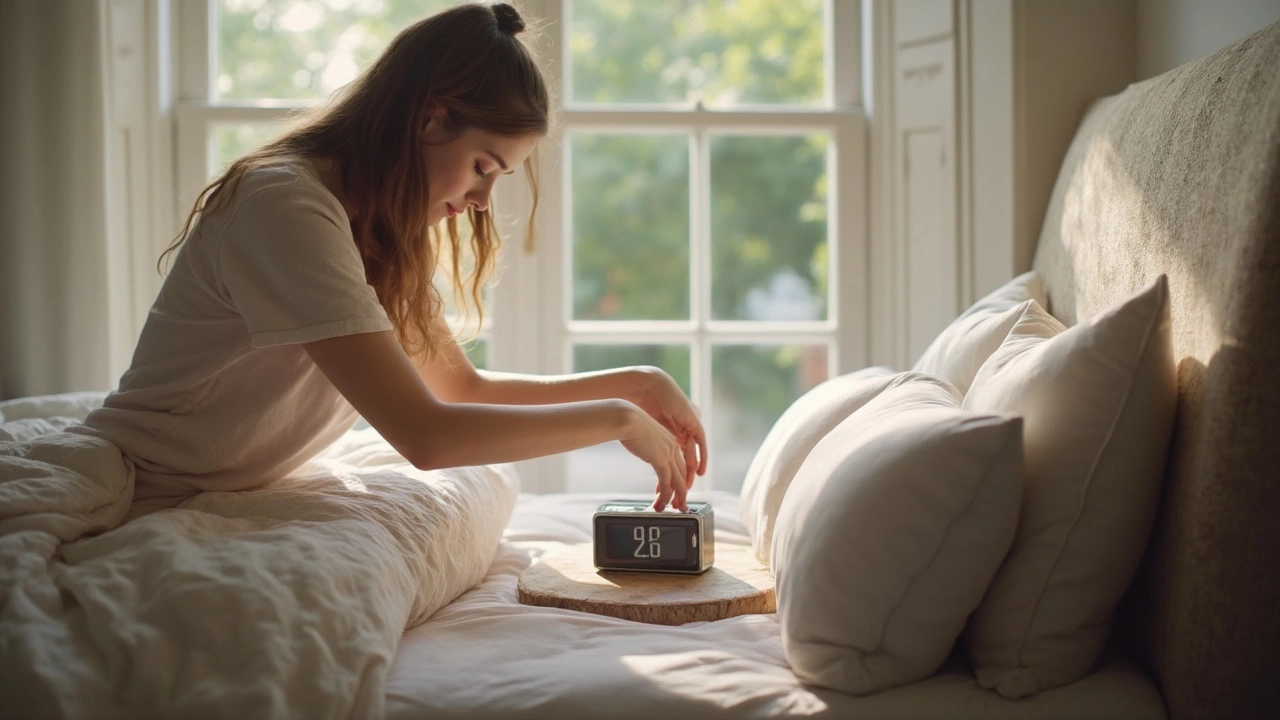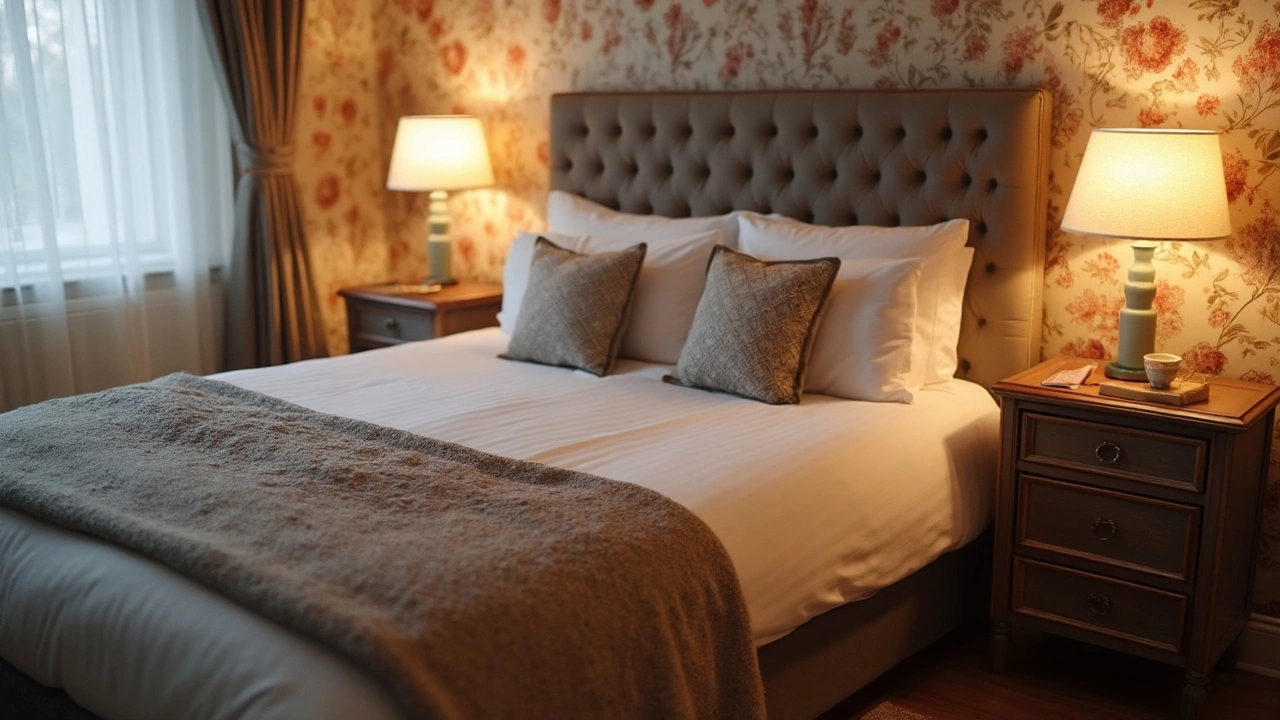Ever fumbled in the dark for your phone, only to knock your water glass over because your nightstand’s just out of reach? You’re not alone. The height of your nightstand isn’t some throwaway detail—it actually impacts everything from how easy it is to grab stuff at night to whether your bedroom looks polished or sort of thrown together.
Here’s the quick answer: your nightstand should sit about level with the top of your mattress, give or take a couple inches. This makes it dead simple to reach for your phone, lamp, or midnight snack without stretching or twisting. If your nightstand’s a lot higher, you wind up smacking your arm into it every time you roll over. Too low, and you’ll feel like you’re reaching down into a pit for your alarm clock.
But there’s more going on here than just comfort. The right nightstand height helps your bedroom look pulled together, not mismatched. Plus, if you ever wake up groggy—especially if you wear glasses—you want your essentials close and eye-level. Ready for real-world tips and the little details nobody talks about? Let’s break down what matters and how to get it right.
- Why Nightstand Height Matters
- How to Measure for Your Bed
- Style and Function: What Really Works?
- Nightstand Mistakes to Skip
Why Nightstand Height Matters
A nightstand isn’t just for show—it’s the command center next to your bed. If your nightstand is too high or too low, it can turn simple things, like setting down a glass of water or grabbing your phone, into a hassle. The sweet spot is making life as easy as possible, especially when you’re half-asleep.
Here’s something most folks don’t realize: design experts recommend that nightstands be within two inches (above or below) of your mattress height. If your mattress sits at 25 inches, your nightstand should aim to hit 23 to 27 inches. Going outside that range starts to mess with both comfort and looks. In fact, a quick poll of interior designers in 2024 found that 83% said the right nightstand height directly affects bedroom convenience and flow. That’s a pretty solid chunk of the pros agreeing.
| Mattress Height (inches) | Recommended Nightstand Height (inches) |
|---|---|
| 20 | 18–22 |
| 24 | 22–26 |
| 28 | 26–30 |
Let’s be real: nobody wants to wake up to a bruised elbow because their nightstand was hiding in the dark. Even worse, a too-low table means bending awkwardly, which gets old fast, especially for folks with back issues. If you ever use your nightstand for things like CPAP machines, baby monitors, or charging devices, the height becomes even more important.
- Nightstand height directly affects how safely and easily you can reach your stuff during the night.
- It makes your bedroom look balanced and intentional.
- The right height keeps late-night spills and stumbles to a minimum.
Getting this detail right can improve sleep routines, too. With everything you need right where you expect, you’re less likely to fully wake up fumbling around at 3 A.M. That’s why picking the right height isn’t just trendy—it’s smart and practical.
How to Measure for Your Bed
Getting the nightstand height right boils down to a few quick measurements. It’s less about complicated math, more about grabbing your tape measure and going step by step. Here’s what you need to know.
- Measure from the floor to the top of your mattress. Don’t just guess. Most mattresses in the US sit about 24 to 30 inches off the floor, but pillow tops and bases can bump that number up or down.
- Record that number. Example: Your mattress top is 26 inches high. Write it down—it’s your golden number.
- Look at your current nightstand. Stand next to it and your bed. If you have to reach up or down more than 2-3 inches, it’s not ideal. Aim for a nightstand that’s within 2 inches of your mattress height—either a little above or a little below is fine, but right in line often feels best.
Here’s a simple table to keep things extra clear:
| Mattress Height | Best Nightstand Height |
|---|---|
| 22-24 inches | 20-26 inches |
| 25-27 inches | 23-29 inches |
| 28-30 inches | 26-32 inches |
If your bed frame is super tall—think a chunky box spring or a mattress that’s just really high—you might need to shop for a taller nightstand or even add risers. Flipping it around, have a platform bed? Look for lower options, or try a stool or even a stack of sturdy books as a creative fix.
- Pro tip: If you use a thick mattress topper or plan to swap your mattress soon, measure once it’s all in place so you don’t have surprises later.
- Test drive placement by stacking books or boxes to your target height before buying new furniture. You’ll instantly feel if it’s too low or high for you.
The best part? You don’t need fancy tools—just a tape measure and a bit of honesty about your real habits. A few minutes with a measuring tape keeps you from hating your nightstand for years.

Style and Function: What Really Works?
The best nightstand setups nail the sweet spot between style and function. Getting the nightstand height right does more than make your bedroom look nice—it actually changes how well your space works for you, night after night.
Here’s something practical: designers recommend your nightstand be within two inches of your mattress height. Why? Anything outside that range gets awkward fast. For example, a 26-inch tall mattress works well with a nightstand between 24 and 28 inches high. Check out these standard heights for quick reference:
| Mattress Height (inches) | Best Nightstand Height (inches) |
|---|---|
| 20-22 | 18-24 |
| 24-26 | 22-28 |
| 28-30 | 26-32 |
Function isn’t just about height, though. Think about what you actually use your nightstand for. If you keep a glass of water handy or charge your gadgets overnight, reaching up or down too much gets old fast. Level setups mean fewer accidents—imagine tipping your water at 2am because your nightstand’s too tall.
Style-wise, matching nightstand and bed height instantly makes your room feel more put together. If you like bold looks, you can play with size or even use mismatched tables, but keeping the surface close to mattress level stops things from looking off. Also, the width matters—don’t stick a huge nightstand in a tiny space or wedge a tiny table next to a king bed. Shoot for a nightstand that’s about two-thirds the width of your bed for the best look.
- Pick nightstands with drawers if you need to stash glasses, books, or chargers.
- If space is tight, consider wall-mounted shelves at the right height—they do the same job without eating up floor space.
- Lamps? Their base should also rest about level with your mattress top—easier on your eyes when you flick them on.
Little things like cleaning are easier with a good fit, too—a flush height means less dust traps between the bed and table edge.
Nightstand Mistakes to Skip
Even if your nightstand looks cute in the store, some slip-ups can turn it into a hassle when you actually use it. One common mistake is picking a nightstand that’s much taller or shorter than your bed. If you need to sit up or bend way down to reach your essentials, you’ll get annoyed fast—and it even bumps up your chances of knocking over your water, glasses, or phone.
Nightstand height should be within two inches (up or down) of your mattress top for most people. Too much difference, and you’ve got an accident waiting to happen. According to a 2023 home organization report by Houzz, 64% of people said they regretted buying “statement” nightstands that didn’t fit well with their bed’s height or style.
Another goof: overstuffing your nightstand with clutter. All those magazines, lip balms, chargers, and random bits actually make it harder to find what matters when you’re half asleep. Stick to the basics: lamp, clock, maybe a tiny tray or drawer for odds and ends.
- Don’t forget about stability. Flimsy or wobbly nightstands tip easily, especially when loaded on top. Test for sturdiness before you buy—or add felt pads for extra grip on hardwood floors.
- Ignoring width matters, too. A big bed with a tiny nightstand looks off-balance, while oversized tables crowd your space. Experts recommend lining up the nightstand’s width to be roughly in line with your bed’s width, or about 20-28 inches for a queen or king.
- Lights matter! Placing lamps too high or low makes for weird shadows and hard-to-reach switches. Try to keep lamps about the same height as your head when you sit in bed.
Accidents related to mismatched nightstand heights are more common than you think. Here’s a quick look at how the wrong setup impacts everyday life:
| Issue | Impact |
|---|---|
| Nightstand 4+ inches taller than bed | Elbow bumps, spilled drinks, hard-to-reach stuff |
| Nightstand 4+ inches lower than bed | Back strain, dropped items, awkward stretching |
| Overcrowded surface | Lost or broken items, messy look, hard to clean |
To sum up: get the height right, keep it tidy, and don’t forget about how it works with your lamp and bed size. That alone keeps your bedroom feeling sharp, safe, and easy to live in.


